*My posts may contain affiliate links, which means I may receive a small commission, at no cost to you, if you make a purchase through a link! Thank you for supporting my website!*
Last updated on February 28th, 2024 at 04:24 pm
Wondering if applying a second coat of stain will darken the color of the wood? Well, look no further because I have your answer!
The second coat of stain will slightly darken (enhance) the color of the wood, but it will not fix splotchy areas in the stain. Better ways to achieve a darker stain on wood include sanding and applying a water coat before staining. You can also do a dirty wipe to darken the stain.
Now that we’ve got the basics out of the way, let’s break into the details a little further so you can darken the color of your wood stain more easily.
Let’s dive in!
Quick Navigation: Ways To Darken Wood Stain
- Does A Second Coat Of Stain Darken Wood?
- How To Darken Stain
- Other FAQs About Darkening Wood Stain
- Final Thoughts
Does A Second Coat Of Stain Darken Wood?
If you notice that your wood isn’t as dark as you want it after applying one coat of stain, you might consider adding a second coat.
It is reasonable to assume that the second coat of stain will darken the wood further. However, the results might not be as intense as you would like.
The wood absorbs most of the liquid and pigment during the first coat of stain. This means that the wood is saturated when you apply a second coat and the wood will have a hard time absorbing more stain.
If your first coat of stain was applied lightly and wiped away immediately, then a second coat that is left on for more than 15 minutes before wiping away can help make the stain darker.
Check out my other article to see examples of what happens the longer you let stain sit on wood without wiping it off.

However, if you notice the color of the stain is lighter than you were expecting and it looks splotchy on the wood then applying a second coat will not help darken the wood.
This splotchy look happens when the wood is not absorbing the stain evenly and often happens when the wood was not prepared properly before staining.
It’s worth trying to apply a second coat before attempting other darkening methods because it’s the cheapest and easiest.
But if that still doesn’t work, here’s a list of other methods to darken the wood stain.
How To Darken Stain
Darkening stain is a common problem that newbie DIYers and woodworkers run into.
Fortunately, there are various ways to darken stain without much additional effort.
As a general rule of thumb, I recommend you gradually darken your stain instead of going too dark on the first try. Lightening a stain that is too dark is much more effort than making a stain darker.
Before you begin staining, ensure the wood is clean and completely dry. When applying a stain or another product, wait for it to dry completely before taking other actions.
You can only determine how dark the stain is when it is wiped and completely dry.
Step One: Wet The Wood Before Staining It
The first method you can try to produce a darker stained wood is to wet it before staining.
Take a cloth or brush and apply a coat of water (for water-based stains) or a coat of MinWax pre-stain conditioner found at Amazon (for oil-based stains) onto the wood before staining it. The wood will absorb the liquid, and the pores will open.

Now there is more space for the wood to accept and absorb the stain when applied.
Experts say applying a coat of one of these liquids before staining can make your stain up to 30% more than when you apply stain to dry wood.
Therefore, if you notice that the stain isn’t dark enough, wait for it to dry completely. Then, add a coat of one of these liquids before applying the second layer of stain.

Step Two: Sand The Wood Before Staining It
The next method you can try to produce a darker stained wood is to sand it before staining.
If you’ve already stained the wood then this method is much less helpful because it will strip the entire layer of stain off of the wood.
But if the first coat of stain is splotchy or uneven or if you want to change the color of the stain entirely, then sanding the first coat off before restaining is key.
Lightly sanding your wood before staining increases its texture and makes it easier for the stain to attach to the wood. Use 120 or 150 grit to sand the wood before applying a stain lightly.
Always sand the wood in the direction of the grain. This will help to eliminate the likelihood of scuff marks.
However, don’t over-sand the wood, or else you might interfere with the natural grain and texture of the wood.
A light sanding is all that is required for the stain to stick better to the wood.
To get the best stain application on future projects, it is always best to sand and pre-condition the wood entirely.
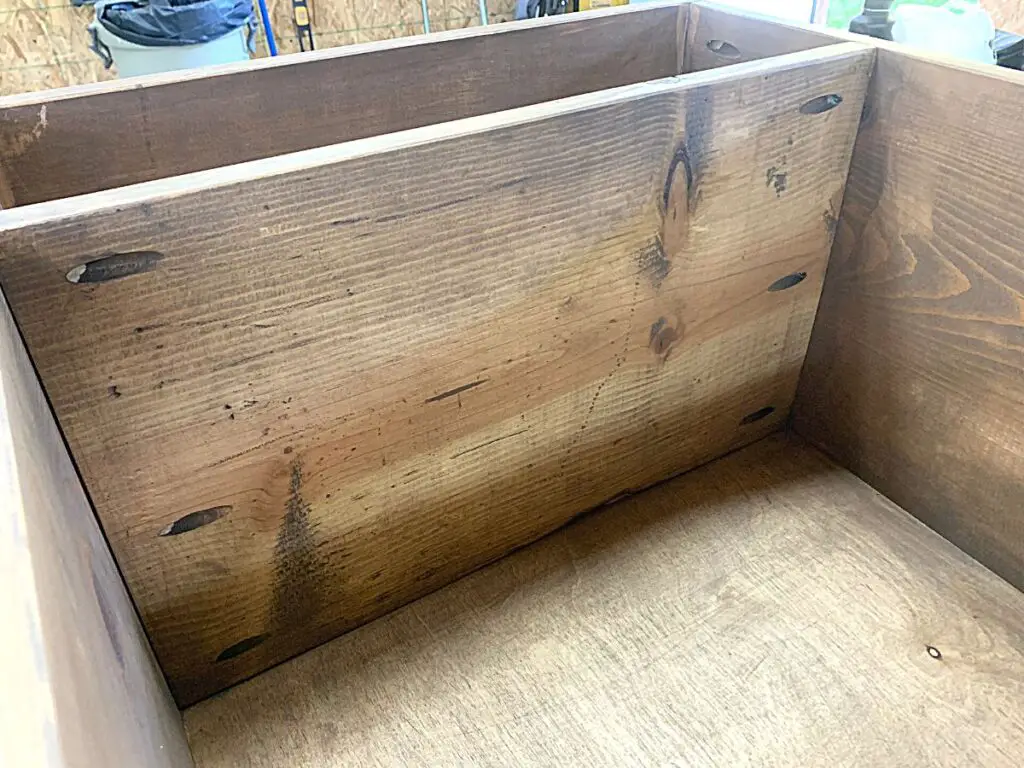
Step Three: Do A Dirty Wipe When Removing The Stain
The next method you can try to produce a darker stained wood is to do a “dirty wipe” when staining.
A dirty wipe is when you don’t remove any excess stain from the wood while you are wiping it on.
Usually, you will take a rag and remove any leftover stain that wasn’t absorbed by the wood during the stain application.
However, when doing a dirty wipe, you will leave some excess stain on the wood when cleaning it.
This will make the stain appear darker. However, dirty wiping can also cause your stain to appear uneven and may increase the chances of having a thick and sticky wood stain. (Check out my other article on how to fix sticky wood stain.)
Therefore, if you want a dirty wipe, you must apply the stain perfectly and in an even layer.
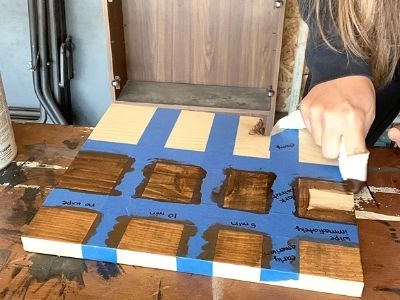
Step Four: Use Dye or Gel Stain Rather Than Oil Stain
The next method you can try to produce a darker stained wood is to use dye rather than oil stain.
An oil stain is the most common stain in a hardware store. This stain is premixed and contains a specific amount of pigment in the staining liquid.
However, if you can find powdered wood dye, you have more control over the darkness of the stain.
When using a powdered dye to stain your wood, you can add as much pigment to the carrier liquid as you want.
Depending on how you mixed it, this will cause the resulting stain to be lighter or darker. I recommend you exercise caution when using powdered dyes and test the die on a sample first, as you can easily over-darken your stain with dye.
If you don’t want to mix your own stain color, but still want a much stronger pigment, then apply a coat of the same color gel stain overtop the existing stain.
Gel stain is premixed just like a regular oil stain, but it has a much stronger pigmentation, so it will be much darker when applied to the wood.
Step Five: Spray A Toner Onto The Sealer
The next method you can try to produce a darker stained wood is to apply toner onto the sealer.
A toner can deepen the color of your stain, making it appear darker than it is.
This is a great way to darken your stain without additional steps that take more time. You can mix some dye with the toner to further darken the final color of the stain.
Just spray the toner mixed with dye onto your top coat and it will help darken the color.
Here’s a video demonstrating how to darken stain with toner.
Step Six: Add Stain To The Polyurethane
The final method you can try to produce a darker stained wood is to add stain to the polyurethane.
Mixing a little bit of stain into your top coat before applying will help darken the final color and ensure the topcoat blends into the existing stain color.
Without mixing some of the stain into the polyurethane, the polyurethane can distort the stain color just slightly because store-bought polyurethanes are already pigmented.
Apply the stain-mixed polyurethane in an even layer using a foam brush or spray it onto the wood.
Here’s what it looks like when you mix oil-based stain with oil-based polyurethane to darken the color of the stain. (Check out my article here for more pictures of stain mixed with polyurethane.)
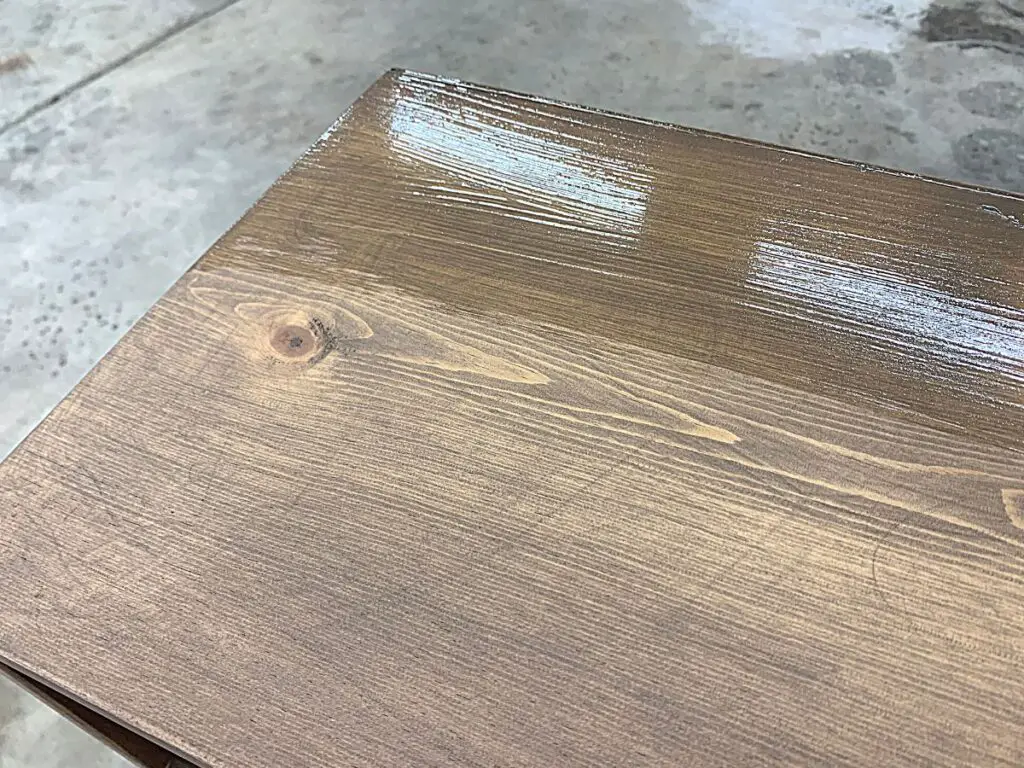
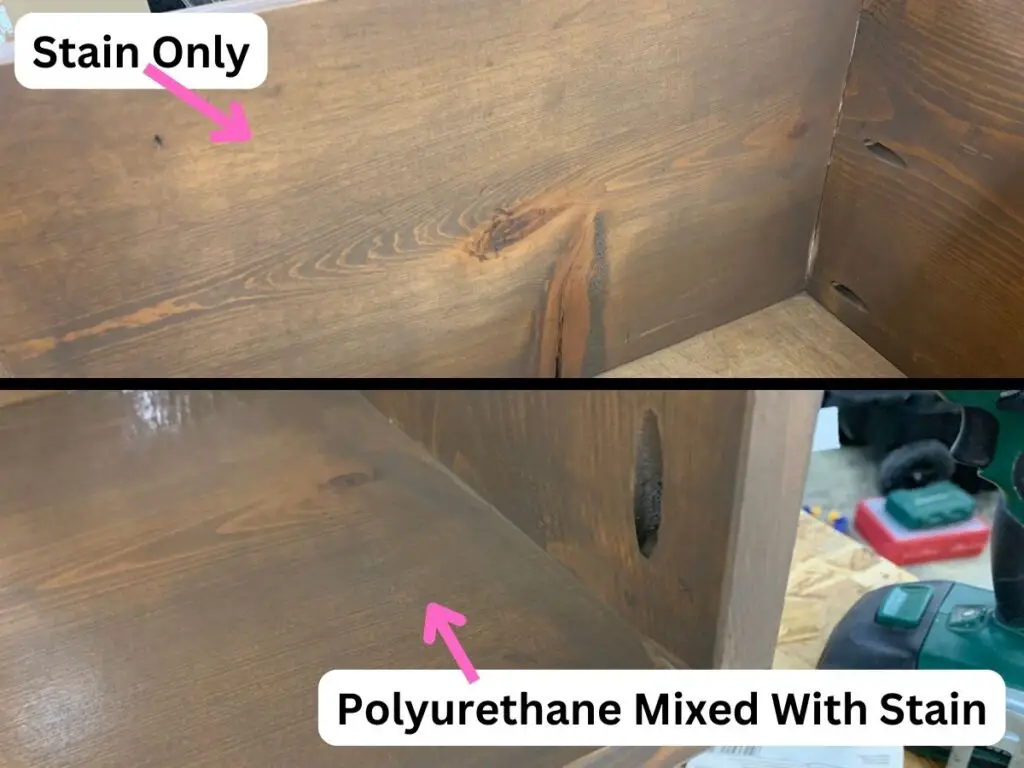
Other FAQs About Darkening Wood Stain
Here are some other frequently asked questions about darkening wood stain to help you get a better finish on your project!
Can A Second Stain Coat Change The Color?
Applying a second coat of stain (either the same or different color) can darken the existing color or minimize the undertones of the first coat of stain. For example, if a stain turns out too red, then it is common to apply a second coat of green stain to reduce the red undertones and turn the wood color brown.
Will Polyurethane Darken A Stain?
Polyurethane is often tinted and can cause the stain to appear darker after application. Depending on the underlying pigmentation, polyurethane can also add an orange, red, or brown tint to the stain resulting in a different final color.
Test the stain and polyurethane on a scrap piece of wood before working on your real wood project.
Final Thoughts On Darkening Wood Stain
There you have it!
Adding another coat of stain to the wood can help darken the color, but the results will likely be underwhelming.
Because the wood absorbed most of the stain with the first coat, it will not absorb as much stain with the second coat and therefore won’t darken as much.
Fortunately, there are many other ways to darken the stain, and I’ve shared six methods for darkening stains.
Hopefully one of those methods helps you achieve the stain color you are after!
Catch you in my next post!
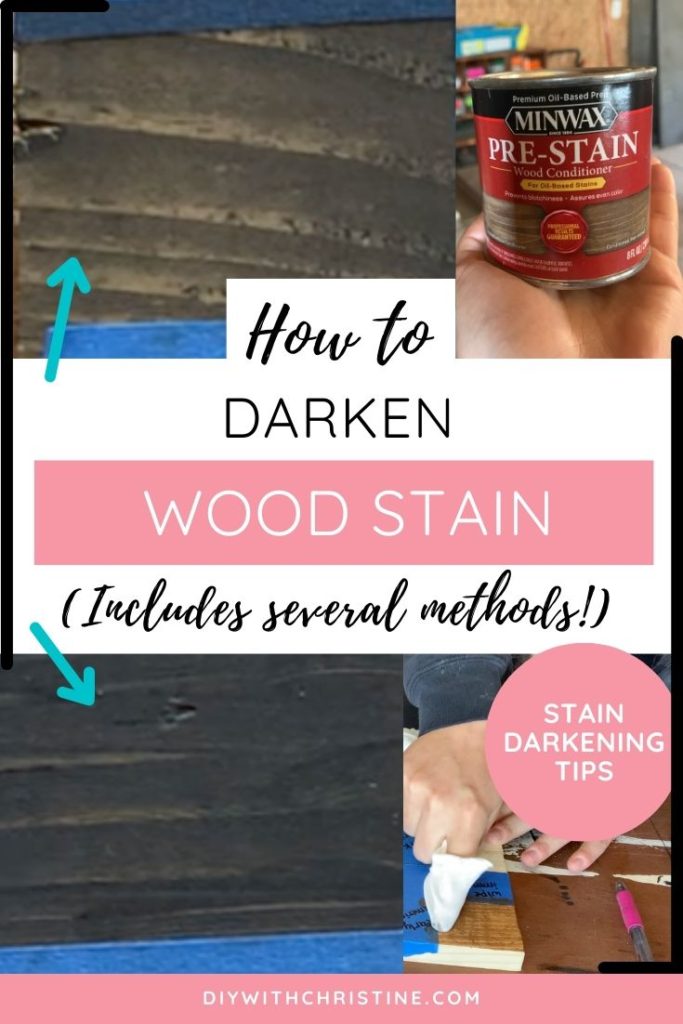

By Christine
Christine is a blogger and DIYer who tackles home renovation and decorating projects alongside her husband, Adam, for their personal residence and rental properties. Although she successfully tackles large renovation projects to avoid expensive contractor fees and bring her vision to life now, her path to success was not easy.
Go here to read her story, “From a Clueless First-Time Homebuyer To A Confident DIYer Creating Her Dream Home One Project At A Time“.
Popular Posts
DIY With Christine is a participant in the Amazon Services LLC Associates Program, an affiliate advertising program designed to provide a means for sites to earn advertising fees by advertising and linking to Amazon.com.







